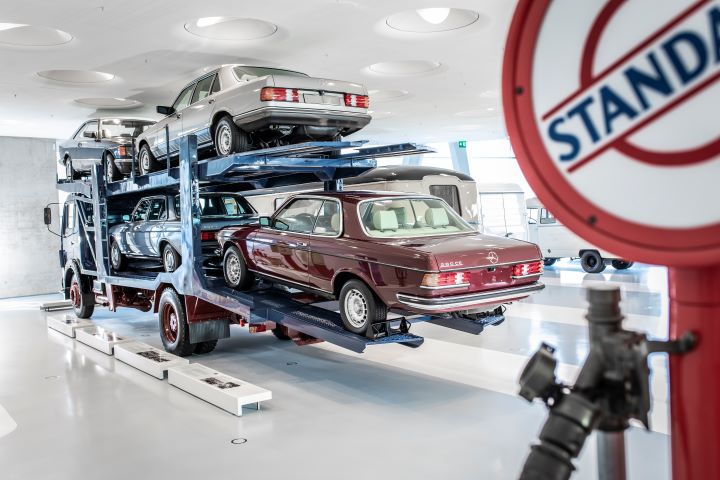
Mercedes-Benz 1624 car transporter
London, 07 May 2024, (Oilandgaspress): – The car transporter at the Mercedes-Benz Museum fascinates many visitors simply because of its size. How can such a large and heavy vehicle be brought into position in the light-flooded space five floors above street level? This is made possible by the construction of the Mercedes-Benz Museum and the integrated logistics.
Load-bearing concrete and lifts: Commercial vehicles are an integral part of the Museum concept. Accordingly, the building is designed to take their weight. Especially the Collection rooms: their floors and walls can bear heavy loads weighing many tonnes. Then there are the logistics: a large door can be seen on the inside wall. This leads to the atrium via a connecting passageway. The heavy-duty lift installed there served to raise the car transporter to lofty heights and then roll it through the door to its allocated space. This was all well within the capabilities of the crane system, which is able to carry up to 40 tonnes. The payload of the suspended crane basket is 20 tonnes. The empty car transporter weighs around 7 tonnes. The commercial vehicle was not loaded until it had been parked in the exhibition area.

Vehicle fleet on board: In total, the exhibit consists of five vehicles. In addition to the car transporter itself, there are four Mercedes-Benz passenger cars. This load weighs in at around 6 tonnes. If the trailer were hitched as well, the transporter could even carry up to ten cars in total. Its capacity and flexibility make the blue commercial vehicle an efficient logistics professional.
The last of their kind: The car transporter has two genuine milestones on board, in the guise of a Mercedes-Benz 230 E and a 280 CE from the 123 model series. These are the final saloon and coupé models respectively from this generation of the Mercedes-Benz upper mid-range to run off the production line. Such vehicles from the end of a production series generally embody customers typical preferences in a given era. As such, they represent key milestones in the company’s vehicle collection. Mercedes-Benz Classic refers to such end-of-production vehicles when planning the supply of spare parts, for example. The car transporter also has a 380 SEL and a 500 SEC from the 126 series on board, as well as a saloon and coupé respectively. Both are part of the S-Class tradition.
Information Source: Read full article
Oil and gas press covers, Energy Monitor, Climate, Renewable, Wind, Biomass, Sustainability, Oil Price, LPG, Solar, Marine, Aviation, Fuel, Hydrogen, Electric ,EV, Gas,

